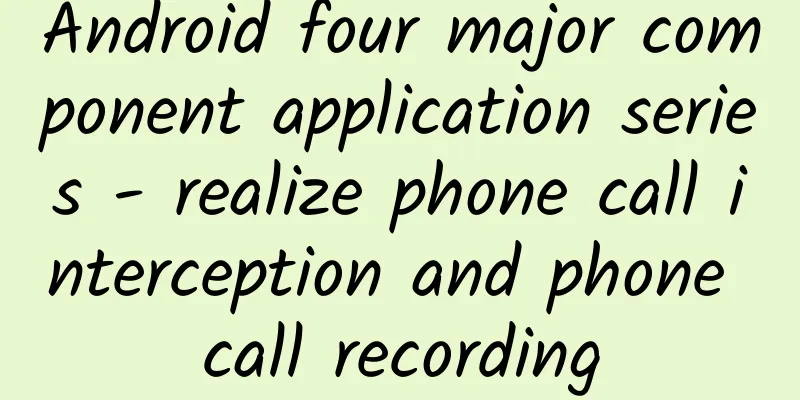Android four major component application series - realize phone call interception and phone call recording

|
Use BordercastReceiver and Service components to implement the following functions: 1. When the phone is in the state of an incoming call, start the monitoring service to monitor and record the incoming call. 2. Set up a phone blacklist. When the incoming call is from the blacklist, hang up directly. When a call is made or the phone status changes, the system will issue an ordered broadcast, so we can use BordercastReceiver to receive the broadcast. Since BordercastReceiver has a short execution time and cannot perform time-consuming tasks or use child threads, we should start a Service to listen for calls and process them. Android does not have an open API for ending a call. To end a call, you must use AIDL to communicate with the phone management service and call the API in the service to end the call. To do this, you need to add the Android source code files NeighboringCellInfo.aidl and ITelephony.aidl to the project, as shown in the figure: Android Studio will automatically compile and generate the corresponding class files
Register broadcast:
5. Don’t forget to set some permissions
|
<<: What is the difference between a programmer and an engineer?
>>: 20 new tricks Facebook is using to eat up the Internet: Do you want to learn from them?
Recommend
The seemingly insignificant "invisible habit" is actually a kind of "zombie behavior"! ?
Leviathan Press: Getting up early and drinking a ...
Baidu search account setup process!
A good account structure, like a solid foundation...
People with pollen allergies, please take a look! Learn some tips on how to prevent and treat pollen allergies
It is the peak season for pollen allergies again....
Reflection on the Double Eleven Carnival: Ecological Concepts Still Need to Be Consolidated
The effect of the Double Eleven Carnival, an e-co...
How does user operation build user tags?
Building user tags is actually a very simple task...
Teach you how to write a perfect product promotion plan in 6 steps! (2)
We will teach you how to write a perfect product ...
How did it become a hit? A look at the development model of Sohu Video's self-produced dramas from "Fox in the Screen"
Since 2012, Sohu Video has been making further an...
Enterprise Weibo operation methods and strategies!
When it comes to corporate Weibo operations , aft...
The 110th anniversary of Qian Xuesen’s birth | What did he leave us?
Creative team: China Science and Technology Museu...
What novel and wonderful manned lunar landing plans and tools were designed in the Apollo project?
The entire Apollo manned lunar landing project la...
Discovered the magical solar system, not only has four gas giants, but also two asteroid belts
The planetary system around the star HR8799 is st...
Activity Operation丨How to Play APP Online Activities and Offline Promotion
Today, I will summarize some methods of online ac...
Aite Tribe Stories (17): My Two Days and Two Nights of Fighting with Eternal Blue
[Original article from 51CTO.com] redhat9i is a n...
2022 Xiaohongshu user portrait insights and grass-planting analysis
The first part [User Mind Insights] mainly discus...
The secret to Tik Tok user growth!
Bright Dairy, a large traditional enterprise, ord...






![[Must-Hide] A Complete App Product Operation and Promotion Plan](/upload/images/67cc265740dc6.webp)


